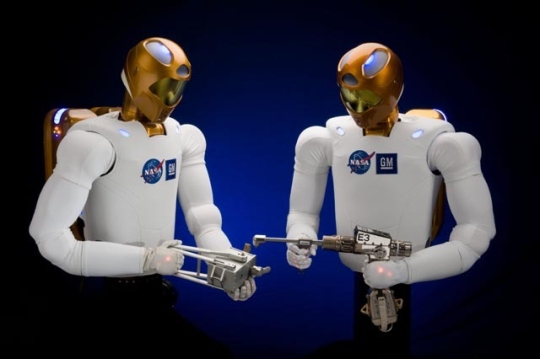
Equipped with leading-edge control, sensor and vision technologies,Robonaut 2, or R2, builds upon NASA’s decade-old Robonaut technology, which was designed specifically for space travel. While R2 is faster and more technologically advanced in a number of ways, what really stands out are its hands, which NASA says can do work beyond the scope of earlier humanoid robots.
The R2 machines are designed to use the same tools as humans. NASA and GM say this advanced dexterity means the robots will be able to work safely alongside flesh-and-blood astronauts and technicians.
“For GM, this is about safer cars and safer plants,” says Alan Taub, GM’s vice president for global research and development.
GM plans to adapt the advancements in controls, sensors and vision technology that were developed for R2 into technology for advanced vehicle safety systems.
R2 can lift and hold a 20-pound weight, or roughly four times as much as other dexterous robots. For addedmobility, the robot can be attached to a Segway-like two-wheel transporter or a four-wheel ATV.
Recent Comments
Helpful for Trainees
Cable Assembly Manufacturers
Huawei for manufacturing?
should have a scanner and then 3D print the repair
IPC-A-610 and IPC-j-std-001